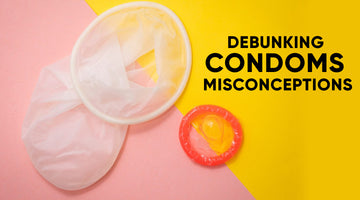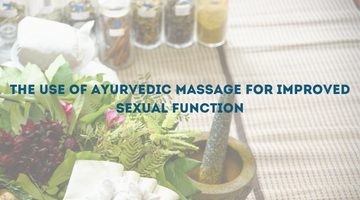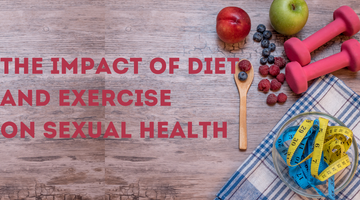
Growing up, many of us learned about sex from what we saw on screen and in movies, what we heard from friends and a few awkward conversations with our parents. When you become sexually active, whether for the first time or with a new partner, it's critical to discuss contraception. Condoms are the second most commonly used contraceptive method after the birth control pill. Not only can you get them at almost any corner pharmacy, but you can also get them for free at family planning and other medical clinics, as well as LGBTQ-friendly bars. Regrettably, many people are hesitant to use them.
When used correctly, condoms are an excellent choice for preventing pregnancy, avoiding STIs (Sexually Transmitted Infections), and taking control of your sexual and reproductive health. When you become sexually active, whether for the first time or with a new partner, it's critical to discuss contraception. Male condoms are one of the most commonly used and easily accessible contraceptive methods after the birth control pill. Condoms can be purchased at any drugstore or obtained for free at family planning and other medical clinics.
Condoms are an important part of family planning discussions. However, there are various misconceptions about condoms around the world. Religious or cultural beliefs about young people's sexuality can sometimes perpetuate these myths. Other times, young people who do not have access to sexual and reproductive health information misinterpret how condoms work and spread that misinformation to their peers.
Condoms, when used correctly, can be an excellent choice for people who want to avoid pregnancy, avoid STIs, and take control of their sexual and reproductive choices. Unfortunately, despite being 98% effective at preventing unintended pregnancies and many STIs, many condom myths make people reluctant to use them. It could be a simple case of misinformation, or someone could claim one of these myths is true in order to convince you not to use a condom. For the sake of your sexual and reproductive health, let us debunk some of the most common condom myths so you can make an informed decision.
Myth #1: Condoms Make Sex Less Enjoyable.
Fact: When both partners agree on contraception, sex is more enjoyable! Instead of worrying about STIs or unintended pregnancy, you can concentrate on this shared pleasurable experience. If you or your partner experience any discomfort, it's most likely due to a problem with the size or type of condom, incorrectly wearing it, or a lack of lubrication something we'll discuss in a moment.
Myth #2: Condoms Come In One Size Fits All.
Fact: There is no such thing as a one-size-fits-all condom, but they do come in a variety of shapes, sizes, colors, and textures. Before you say you're too big to use them, keep in mind that standard-sized condoms can stretch to quite large sizes.
However, a condom must be properly sized; too small, and you risk breakage and an uncomfortable experience. Too large, and you risk slippage, a lack of protection, and the possibility of breakage.
When shopping for condoms, determine which size and brand will work best for you. In the worst-case scenario, get a variety pack so you can try on different sizes to find a good fit.
Myth #3: Two Condoms Are Preferable To One.
Fact: No way. When it comes to making decisions, two heads are better than one, but not when it comes to condoms. The best way to reduce your risk of STIs and pregnancy is to use one condom correctly," Dr. Gelow said. The use of two increases the risk of breakage due to increased rubbing and improper fit.
Myth #4: Condoms Do Not Prevent STIs.
Fact: Condoms can effectively prevent and reduce the risk of STIs, HPV, and pregnancy 98% of the time when used correctly, which includes properly opening and placing the condom and using appropriate lubrication. A condom is a simple way to protect your health.
Condoms act as a barrier that prevents bodily fluids from mixing and reduces exposure of one partner's fluids from another. Condoms should be worn throughout the entire penetrative act (Sex), not just during the climax, as there are times when you can still share fluid before the climax.
Condoms are the most effective way to prevent STIs, which have been on the rise since 2012. Remember, 50% to 80% of STIs have ZERO symptoms, so just because a partner says they have no symptoms or doesn't show any symptoms doesn't mean they don't have an STI.
Myth #5: Because Allergic To Latex, Should Not Use Condoms.
Is there a latex allergy? Not a problem! You can still have an amazing and safe sex life if you use latex-free condoms.
Many polyurethane or polyisoprene condoms offer the same pregnancy and STI prevention efficacy as latex. These condoms are frequently thinner and looser, providing a more comfortable experience for those who feel a condom.
However, some natural condoms, such as lambskin condoms, should be avoided. These natural condoms should be avoided because they do not provide STI or HIV prevention. Other materials, such as polyurethane or polyisoprene, should be avoided.
Myth #6: Condoms Are Only Used For PIV Sex (Penis In Vagina).
Condoms can be used for vaginal, oral, and anal sex by people of all genders and sexual orientations. Internal condoms, also known as female condoms, can be inserted in the vagina or rectum in addition to external condoms that are placed on the penis. Female condoms are 95% effective when used correctly, according to the National Health Service.
Myth #7: Vaseline Is Good For Extra Lube.
No, it does not. Lubricated condoms are indeed more effective than unlubricated condoms, which can break. However, make sure the lubricant is condom safe. Vaseline and other petroleum-based products cause condoms to break.
Lubricants containing oils, fats, or greases, such as hand lotions, baby oil, and cooking oil, should never be used. Instead, use a lubricant that is water-based or silicone-based.
Myth #8: I Only Need Condoms As A Form Of Contraception.
Fact: Combining condoms with another form of birth control, such as the pill, or IUD is an excellent way to avoid pregnancy and STIs. Remember that if you're on birth control, this will only protect you from pregnancy, not STIs. Using condoms every time you have sex is both safe and prudent.
In The End
Despite popular belief, condoms are safe, effective, and widely available, and they provide you with options regarding your sexual and reproductive health. They do not require a prescription and are the only way for sexually active people to protect themselves from STIs such as HIV, gonorrhea, syphilis, and chlamydia.
If you have any questions, don't hesitate to ask your doctor during your next well check, which should be done once a year. AADAR always promotes to open mindset where you should be openly discussing sex and sexual concerns. Asking for condoms should not be felt taboo. Rather than having unwanted pregnancies or diseases, it's always good to be bold to buy condoms. We have Health Experts with whom you can easily connect and discuss your health concerns. To obtain the most accurate diagnosis, you can consult your family doctor first, or you can contact our Health Expert or connect with us at +919867667699




I stumbled across a comment while scouring the internet. I am suffering from erectile dysfunction, which was the same situation i found on the post , i ordered mine and same with me today am cured ,if you also need his assistance , You meant go through his website: https://bubaherbalmiraclem.wixsite.com/website Or reach via mail: buba.herbalmiraclemedicine@gmail.com or his Facebook Page ;https://www.facebook.com/profile.php?id=61559577240930 . AND THANK ME LATER